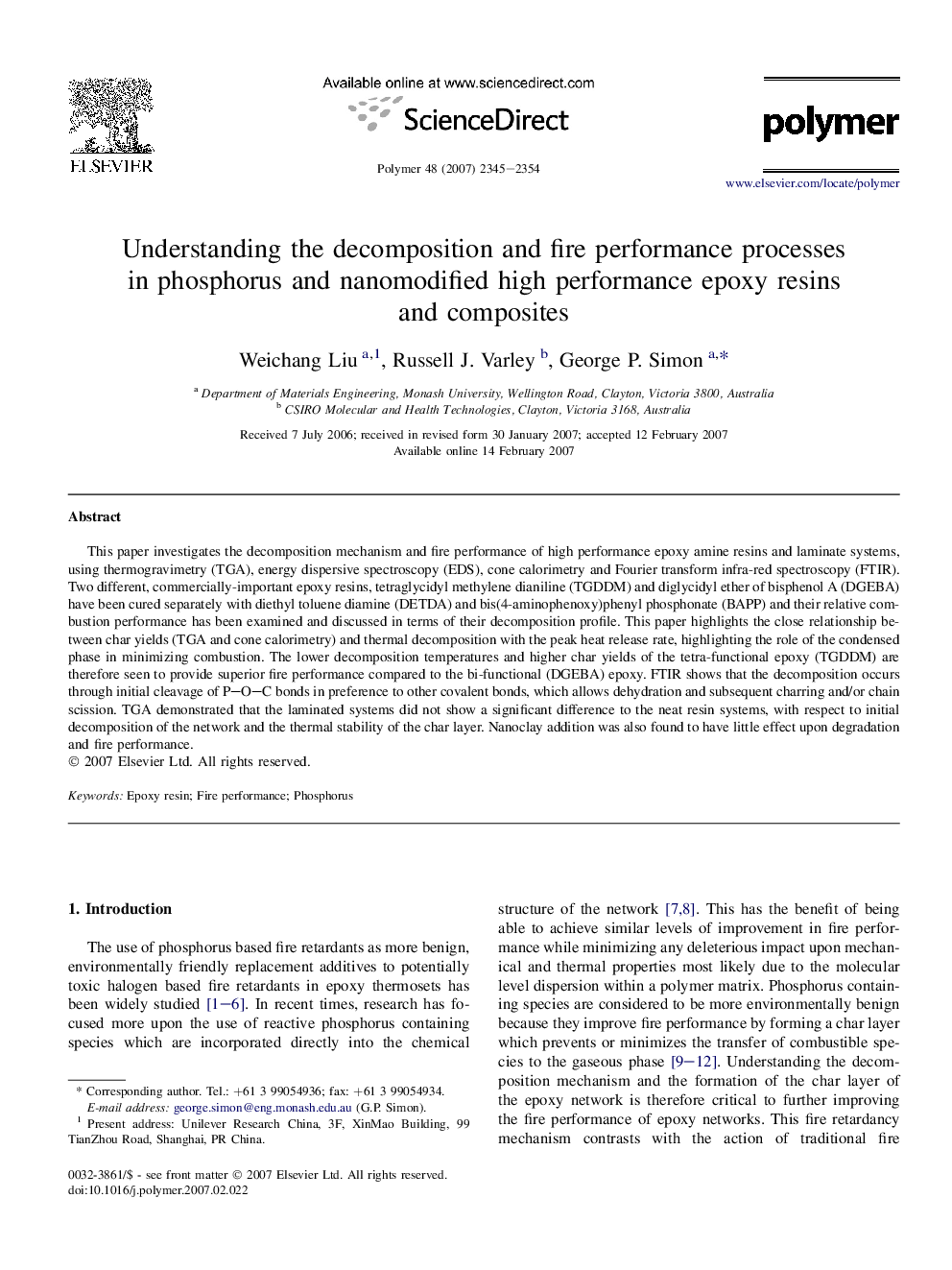| Article ID | Journal | Published Year | Pages | File Type |
|---|---|---|---|---|
| 5185988 | Polymer | 2007 | 10 Pages |
This paper investigates the decomposition mechanism and fire performance of high performance epoxy amine resins and laminate systems, using thermogravimetry (TGA), energy dispersive spectroscopy (EDS), cone calorimetry and Fourier transform infra-red spectroscopy (FTIR). Two different, commercially-important epoxy resins, tetraglycidyl methylene dianiline (TGDDM) and diglycidyl ether of bisphenol A (DGEBA) have been cured separately with diethyl toluene diamine (DETDA) and bis(4-aminophenoxy)phenyl phosphonate (BAPP) and their relative combustion performance has been examined and discussed in terms of their decomposition profile. This paper highlights the close relationship between char yields (TGA and cone calorimetry) and thermal decomposition with the peak heat release rate, highlighting the role of the condensed phase in minimizing combustion. The lower decomposition temperatures and higher char yields of the tetra-functional epoxy (TGDDM) are therefore seen to provide superior fire performance compared to the bi-functional (DGEBA) epoxy. FTIR shows that the decomposition occurs through initial cleavage of P-O-C bonds in preference to other covalent bonds, which allows dehydration and subsequent charring and/or chain scission. TGA demonstrated that the laminated systems did not show a significant difference to the neat resin systems, with respect to initial decomposition of the network and the thermal stability of the char layer. Nanoclay addition was also found to have little effect upon degradation and fire performance.
